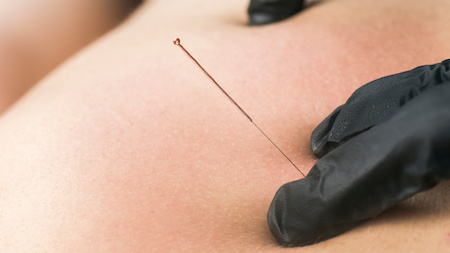Dry Needling As A Way To Address Pain

Dry Needling
Dry needling is the practice is using small filiform needles in order to stimulate healing for individuals with pain or movement dysfunctions. These needles are strategically and anatomically placed by skilled healthcare providers such as physical therapists, chiropractors, physicians, and more. While similar to acupuncture, dry needling uses an evidenced based approach, targeting myofascial trigger points and uses the providers’ anatomy knowledge to help benefit the patient. Dry needling has many uses in physical medicine, including but not limited to, trigger points, scar tissue, fascial adhesions, tendon rehabilitation, and cosmetics.
Myself
I am a licensed Doctor of Physical Therapy, and hold certifications in vestibular rehabilitation, return to play after concussion, and am a strength and conditioning specialist through the National Strength and Conditioning Association. I’ve been a practicing physical therapist at a university for the past 3 years.
Client
I had a client who benefited from dry needling. They presented with chronic upper trapezius pain, generalized in nature, unresponsive to stretching or other manual therapy techniques. The patient described the pain as aching and burning. This patient had difficulty with activities that included reaching, desk work required for their job, and sleeping due to the pain. This patient had seen multiple other providers, unfortunately without success, and was open to trying another type of technique.
In dry needling, the physiology behind why this treatment method is effective has the name of mechanotransduction. Essentially, the provider is helping the cells of the patient’s body change how they sense and respond to mechanical stimuli. This can help the patient change abnormal muscle patterns, change local circulation of blood flow, increase collagen proliferation, increase circulation in nearby joints, and increase the body’s production of endogenous (natural) opioids. This patient used the dry needling modality as a means to bridge to more active recovery strategies. That is, the dry needling helped with pain relief and a return to function, and in conjunction with a rehabilitation plan that included strengthening and mobilization of the soft tissues, it was an essential aspect of the early management of this patient’s care.
Initial Response
The patient experienced soreness after the treatment, which is normal the day after. However, symptoms improved, and activity tolerance increased. Although the upper trapezius muscles were the primary focus, the cervical multifidi and suboccipital muscles are often treated as well. It’s important to note that dry needling should always be performed by a certified healthcare practitioner, and especially in cases where the area to be treated is surrounding potential sensitive structures. For example, the upper trapezius, scapular musculature, and mid back musculature is all in close proximity to the lung fields. It is important that your provider takes caution of this and has the proper training. This incidence of pneumothorax (lung puncture) is rare, the patient should consent prior to treatment.
Results
The patient greatly benefited from dry needling, which kick-started her rehabilitation and led to more active recovery. The patient’s pain relief and symptom improvement early on in her care were crucial. They allowed her to tolerate more movement and function in her cervical structures. This, in turn, allowed her body and natural healing process to take its course. Dry needling can play a crucial role in initiating the healing process for patients struggling with chronic pain issues. Various techniques, including dry needling, can be essential components of care. It is derived from acupuncture, an ancient healing technique, and is a new method in rehabilitation.


Leave a Reply
You must be logged in to post a comment.